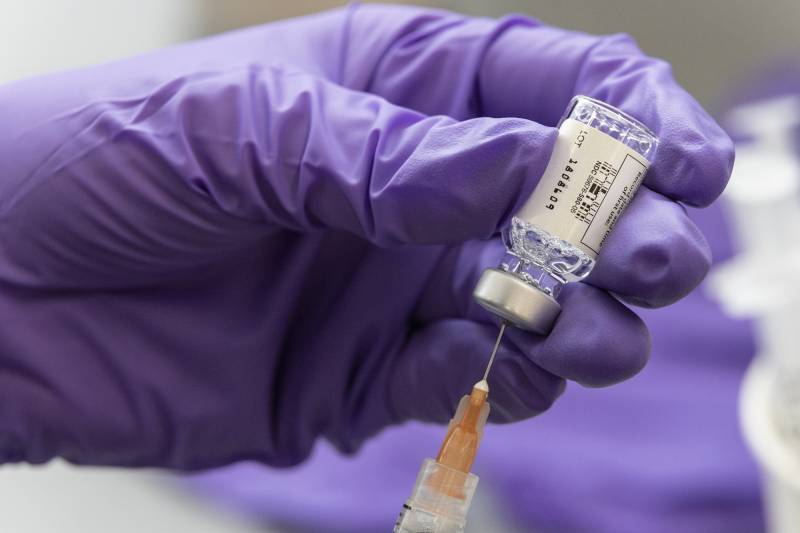This week, news of a rare blood clot in a patient at UCSF, after he received the Johnson & Johnson coronavirus vaccine, brought this very small risk close to home.
The chance of developing these blood clots is tiny — only 2 in 1 million. And UCSF reported Monday that the patient is doing well and expected to go home in a few days. Still, knowing there is a risk at all is upsetting and confusing.
Health experts agree Johnson & Johnson is still a great vaccine. Professor Susana Ramírez, a UC Merced expert in communication, culture and public health, recently shared some guidelines with KQED’s Raquel Maria Dillon about how to evaluate risks around these vaccines.
This interview has been edited for length and clarity.
There have been 16 of these rare blood clot cases out of about 8 million Johnson & Johnson doses given out in the U.S. Can you put that overall risk of this vaccine in context for us?
Susana Ramírez: The extraordinarily rare events that we are seeing, with these blood clotting disorders are tragic and sad, but they’re extremely rare. But the potential to be infected with the coronavirus is much higher than the potential to get one of these severe side effects.
As humans, we really want to avoid bad outcomes. And so it’s really easy for us to focus on the negative outcomes that we might be hearing about, even when those outcomes are so very rare. And the risks from the coronavirus are not so obvious. Some people get very sick and they are hospitalized, and some people die, but other people may not get a very significant disease. I think what we need to focus on is the relative risk here is much lower for side effects than of getting the actual coronavirus.
We’ve heard from our audience that they have concerns that the J&J shot is for homeless people or people who don’t have time to come back for a second shot. They’re basically worried it’s a lower quality option. How do you address that?
Ramírez: I think the very most important fact to remember is that all three of the vaccines that are available to people in the United States have incredibly high efficacy rates. The very best vaccine is the one that you can get in your arm as soon as possible.
All three of these vaccines have prevented serious hospitalization and death from this disease. And that’s the worst case, right? That’s the worst-case outcome. And all three of these vaccines are effective at preventing those.
But the problem with trying to compare [efficacy rates] is that these three vaccines were developed at different times, and they were developed and tested with essentially different groups of people. The Moderna and Pfizer vaccines were tested really at the early end of the pandemic over a year ago.
The J&J clinical trials finished very recently. And by that time, we’d been engaging in behavioral measures like wearing masks and social distancing. So those things had been in place for months when the J&J vaccine was tested. So we were a different population, and the disease itself was different by this point. We had more variants that were circulating. And so it was really tested under very different conditions. So there’s not an apples to apples comparison that you can do, although it’s tempting.
In some ways, even though we see a lower effectiveness, it’s really among a disease that had evolved and changed and adapted to our conditions. And so the fact that the vaccine is still effective in that context, I think is a real strength and plus in the J&J column. I don’t think by any stretch of the imagination that we should think about it as a lesser kind of vaccine.
I think that there is definitely a kernel of truth to the idea that folks are talking about the two-dose vaccines, the Pfizer and Moderna, being for more privileged people. You have to have certain privileges like a flexible job, transportation to the vaccination site twice, a stable residence and a phone number to make those follow-up appointments, and then the ability to take some time off if you’re not feeling well after the vaccine. But that doesn’t make any of the vaccines better from a disease prevention perspective.
